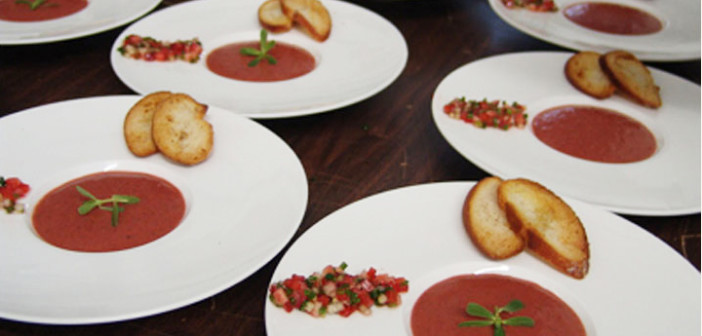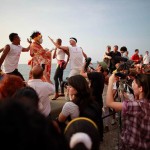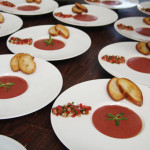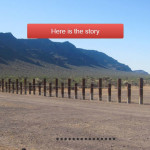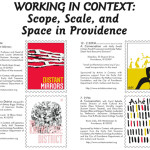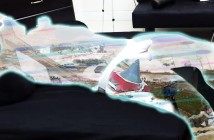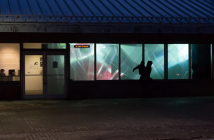Artists in Context is unusual in its design and mission. Tell us about the need it fills and how the organization operates.
Artists in Context (AIC) was founded to support the collaborative practices of artists who engage with experts in other fields to invent new ways of thinking about the critical issues society faces. We identified eight themes--Nature, Health, Consumption, Justice, Learning, Belief, Shelter and Nation--around which to organize the artistic production. These issues are complex, and in society there is a dearth of space to deal with complexity, reimagine the status-quo, or cultivate a sense of individual or collective agency over these issues. We became interested in the work of collaborating artists who were opening that space and creating the new frameworks and platforms for us to re-imagine our future.
AIC wanted to create a supportive environment for this work, which included a three-year initiative entitled Connected and Consequential, a series of programs, events, workshops and conferences to increase understanding of the practice, instigate inspiration, and add to the building blocks that will undergird the development of this field. We are currently focused on the Artists’ Prospectus for the Nation, an online collection of exemplary projects that demonstrates the way in which artists are insinuating themselves into other areas of knowledge production and organizational systems such as science, medicine, sociology, and politics in order to develop meaningful and systemic platforms for change.
How did you come to create AIC? Is it modeled on other existing organizations? Where did you find guidance as you designed it?
AIC grew out of our common interest in and involvement in the ways in which artists and art can bring about change—-change in perception, understanding and even behavior. Both of us perceived a new groundswell of artists who wanted to embed their practice in society. We were not interested in creating a non-profit organization to support these practices; rather, we wanted to operate flexibly and opportunistically, which we believed was a more accurate reflection of the fluid and networked direction global society is taking.
We established a national board of advisors, and organized focus groups in each of the geographic areas where AIC operates: Greater Boston, Portland, ME, Northampton, MA, and Providence, R.I. The national board provides us with a broad understanding of engaged contemporary art practice, and the locally based advisors help us to discern the unique resources and challenges of a particular place. It is this combination of guidance that enables us to place our work in a national context and serve the unique conditions of individual cultural landscapes.
What did each of you do prior to running AIC, and how did that equip you for this current role?
Louisa McCall Before AIC, I was the Program Director at the LEF Foundation, a private family foundation that supported the creation of new work in all contemporary art disciplines. Over an eight-year period, I oversaw the investment of $4.3 million in 420 artist and organizational projects and created special strategic initiatives for independent film production, artist support systems, and public art, architecture and design. My role included the critical review of project proposals, technical support, research of the systemic forces underlying the New England cultural landscape, and the collaborative design of new initiatives to address systemic issues. While at LEF, one particular project had enormous influence on me: the National Bitter Melon Council. The project excelled in using the language of metaphor, the form and flavor of bitter melon to evoke questions and reactions to bitter sentiments, unfamiliarity and difference. Little did I know that this creative, extra-disciplinary, embedded collective, that performed research, created the space for dialogue and aimed to help shape a modern civic character would be the beacon for creating Artists in Context.
When Marie Cieri moved back to Cambridge following her tenure as Assistant Professor of Social Geography at the Ohio State University (2004-2008), I asked her if she would be interested in working with me to establish a new support system for artists who were using their creativity and finely honed skills to intervene in the critical debates of our time. Having founded the Arts Company Inc. in 1987, Marie brought extensive curatorial and production experience to the endeavor. Her long-term engagement with art and activism, as an artist, scholar, writer and consultant was an invaluable asset to the construction of AIC. Marie steered the initiative to encompass more than project financial support; she emphasized the need for support at the generative stage when the connections leading to potential projects are first made. This expanded the shape and content of AIC, and mandated a shift from a linear to a network approach.
What are you working on currently? What are your plans for AIC in the coming year?
Our current focus is the Artists’ Prospectus for the Nation. As mentioned above, it is a curated online collection of projects that we feel represents the highest standard of engaged contemporary art practice. The Prospectus has become the foundation for all of our programming. It is a concrete "thing" that people can put their arms around. Our original flexible organizational framework concept was too amorphous and had many people wondering what AIC actually was. Now we can point to the Prospectus as a concrete body of work. Our objectives remain the same: to raise the visibility of this type of contemporary art practice, to provide financial and non-financial support to collaborating artists, and to instigate conversations, research and new collaborations in contemporary engaged practice. Now all of this activity takes place only in relationship to the Prospectus and its projects.
We are currently in the process of raising awareness for the first volume of the Prospectus, focused mostly on the issues of Health, Nature, Consumption and Justice. We write about it on relevant blogs and online scholarly journals. We organize presentations of the Prospectus at art schools and are working to expand our reach into other professional settings, such as the Society for Human Ecology. To advance the individual projects within the first volume of the Prospectus we organize physical programs to promote a deeper, multivalent understanding of the project. Typically we invite speakers from different walks of life to talk about the project from their unique vantage point. For example, "Fefa in Context," a recent talk held at the Barker Center, enlisted a humanitarian, an art curator, a humanities scholar and a history and economics scholar to discuss the social, political and cultural relevance of Fefa, a performance and installation project in Cuba. In the coming year, we will continue to program around the first Prospectus as well as pursue funding for a second installment focused more on the issues associated with our themes of Nation, Learning, Shelter and Belief.
What are some challenges you face, and how are you working to address them? What's your biggest need right now?
The biggest problem we face is finding the right niche for our work. We tend to fall through the cracks of funding streams that either seek to fund art in its traditional institutional context or apply quantifiable evaluation measures to art that operates in a social context. The art practices that we support are essentially homeless, which is both a positive and negative thing. On the positive side, collaborating artists can float among many different disciplines and fields--art, agriculture, engineering, biomedical research, environmental science, autism, public health, spirituality, immigration policy, banking, just to name a few. This mode of extra-disciplinary practice suits well what artists do best: combine diverse elements into a new and unpredictable whole that generates new ways of seeing and thinking. On the negative side, no one can really pinpoint or critically evaluate this work. We are starting to think that defining it as artistic research, on a par with scientific research, may be a feasible approach. This relates to the much larger idea of re-integrating scientific and artful ways of knowing. The false bifurcation of nature and society in the time of the Enlightenment has led us to believe that humans are in control, rather than one part of a complex living world. To regain a more just and sustainable way of life, we need to rely on stories as much as facts, on what is unseen as much what is seen; on passion as much as intellect.
We need people to take hold of the idea of artistic research, of artists as collaborators not sole authors, of art as an important and valuable means of knowledge production. It goes without saying that we need 1,000 true fans to support the work we do.
What advice do you have for someone looking to follow in your footsteps? What do you wish you knew when you first started out?
To be opportunistic and find ways to leverage what already exists in your field of endeavor. We have been able to accomplish a great deal (from 2009 to March 2013, AIC organized 108 programs, built a mailing list of over 2,000 people and raised $450,000 from national, regional, and local foundations to fund its Connected and Consequential initiative and the publication of the Artists’ Prospectus for the Nation) with one full time staff member and two part-time staff members by identifying the "cracks" and existing opportunities where we could insert our creative capital. We wish we had known more about how to fund basic research, and its meaning for the arts.
Name one challenge that the Boston cultural sector faces, and how you’d suggest fixing it.
The Boston cultural sector is divided. It fails to work as an ecosystem, and falls instead into its individual component parts, all fighting for the same limited resources. If we took a more holistic approach to arts and culture and defined it as a way of thinking that can help to bring about sustainable and just communities, social cohesion, democracy, urban agriculture and urban health, then arts and culture would be seen as an indispensable endeavor that encompasses the institutional and post-institutional, the formal and informal, the elite and the grassroots.
Tell us about one cultural event/exhibition or organization/individual (other than your own) that has exceeded your expectations recently. What work are they doing, and why is it important?
The DocYard. Although this program is quite separate from what Artists in Context is about, the level of excellence is indisputable. The collaborating partners of the DocYard have mined a rich asset of the New England cultural landscape--documentary film production--and given it the rich context and profile it deserves.
- Prospectus artist Maria Magdalena Campos-Pons in performance as FeFa.
- Prospectus artist Alfredo Jaar teaching Public Interventions.
- AIC Workshop on Falling Through the Cracks (of funding streams) with FEAST, MA
- Cross Species Dinner Club in collaboration with Natalie Jeremijenko and Mihir Desai.
- Prospectus project by the Institute for Infinitely Small Things, Erase the Border
- Announcement of Connected and Consequential conference, Providence, R.I.
www.artistsincontext.orgIcon image: Cross Species Dinner Club in collaboration with Natalie Jeremijenko and Mihir Desai.

